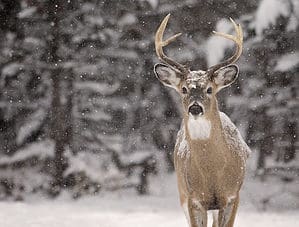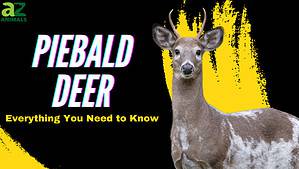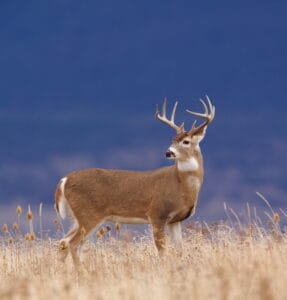Continue reading for our analysis...
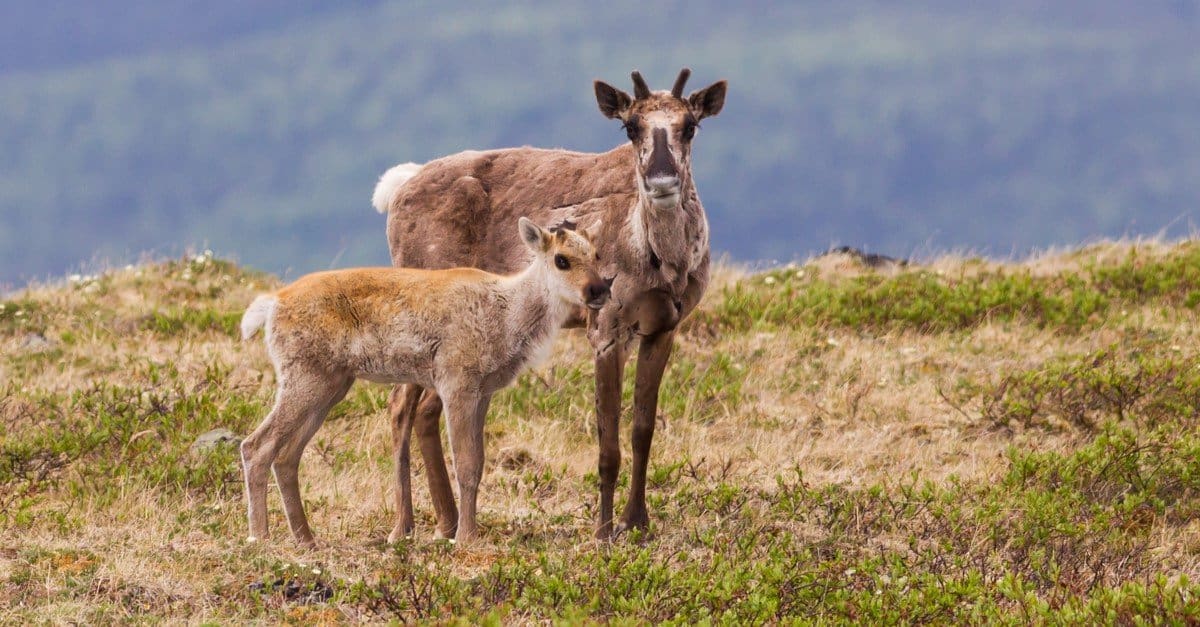
For Caribou There is Safety in Numbers
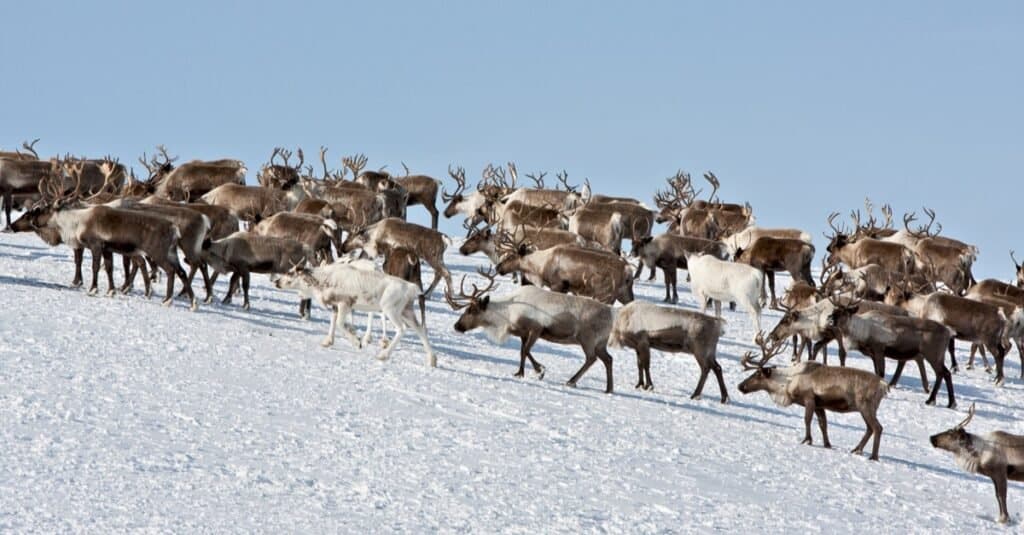
Caribou travel and live in large herds to increase safety.
©Sergey Krasnoshchokov/Shutterstock.com
Caribou are characterized by their antlers—they’re the only deer species that grow antlers in both males and females. The bull’s antlers grow massively, while the cows have much shorter antlers. These beautiful animals sport an outer guard coat of straight fur and a thick, wooly undercoat. Caribou grow 4 – 7 feet in length and weigh from 50 – 660 pounds – with males weighing much more than females.
Usually, caribou stick together in large herds, particularly as they migrate long distances to find adequate food. There are smaller herds, however, that don’t migrate at all. They’re herbivores, with their diets consisting primarily of grass-like plants, reindeer moss, and small shrubs
In Alaska, caribou have two primary predators to worry about: bears and wolves.
Grizzly Bear Kills Caribou
“Imagine that sucker running at you,” says a man behind the camera as he captures a huge grizzly charging across an open field. The grizzly has managed to single out a caribou, but the caribou has a head start.
The camera pans all the way over to the right where the caribou has entered some water and is trudging along to cross and get away from the bear.
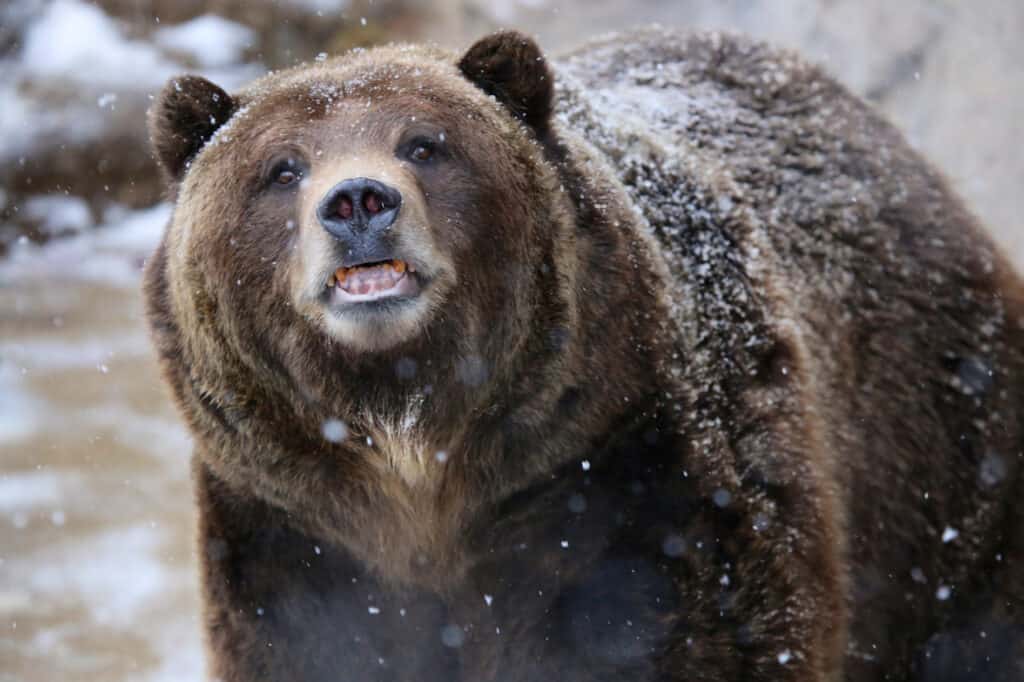
Grizzly bears prey on caribou, as well as moose, elk, and deer.
©Steve Boice/Shutterstock.com
But the bear knows this is its chance and won’t squander a meal. It passes through a small pond and as it keeps running toward the caribou, you can watch as the water splashes off its body. This bear is committed to the kill and is wasting no time shaking off the excess water from its long, brown fur.
It takes only a few moments before the bear reaches the area in the water where the men spotted the caribou. It charges right in without hesitation and starts swimming when its legs can no longer reach the bottom.
The caribou seems to have stopped, perhaps unaware that the bear was still charging because, at this point, it’s barely making its way out of the water on the other side. The bear is coming up behind it at record speed.
The caribou ventures back into the water as the bear gets onto land to improve its speed. It runs around the edge of the water and starts its pursuit again in the water. They’re both moving far away from the edge and right into the heart of the water, where their swimming sometimes turns into sprinting.
Finally, the grizzly catches up to the caribou in a shallow part of the water, close to the other edge. After a few moments of struggle, the bear grabs the caribou by the neck and drags it out of the water.
Is This Behavior Normal for Grizzly Bears?
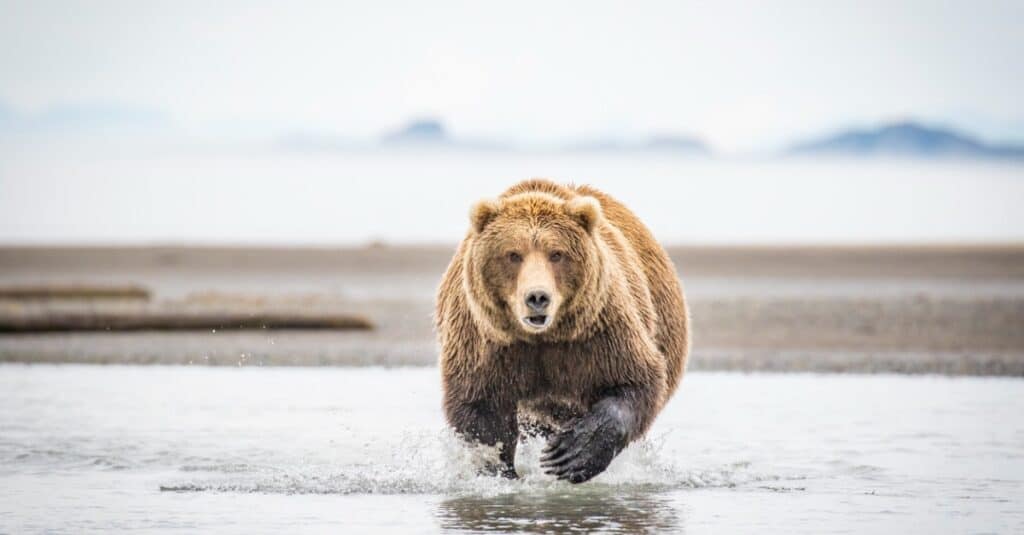
Grizzly bears can weigh up to 600 pounds or more and are more than capable of bringing down a deer.
©iStock.com/Jess Bray
Grizzly bears are omnivores and will eat honey if they can. Though they mostly eat some kinds of plants with fleshy roots, fruits, berries, grasses, and forbs. If grizzly bears are on the hunt, their prey can include fish (especially salmon), rodents like ground squirrels, and carrion, and hoofed animals like moose, elk, caribou, and deer.
Although they would all prefer to find Caribou already dead. In the rare cases when they must actively hunt a Caribou, the bears will aim for the weakest members of the groups: fawns, and the sick, or old Caribou. Bears preparing to hibernate will be more likely to go for big, filling prey like a caribou.
Where Do Grizzlies and Caribou Live?
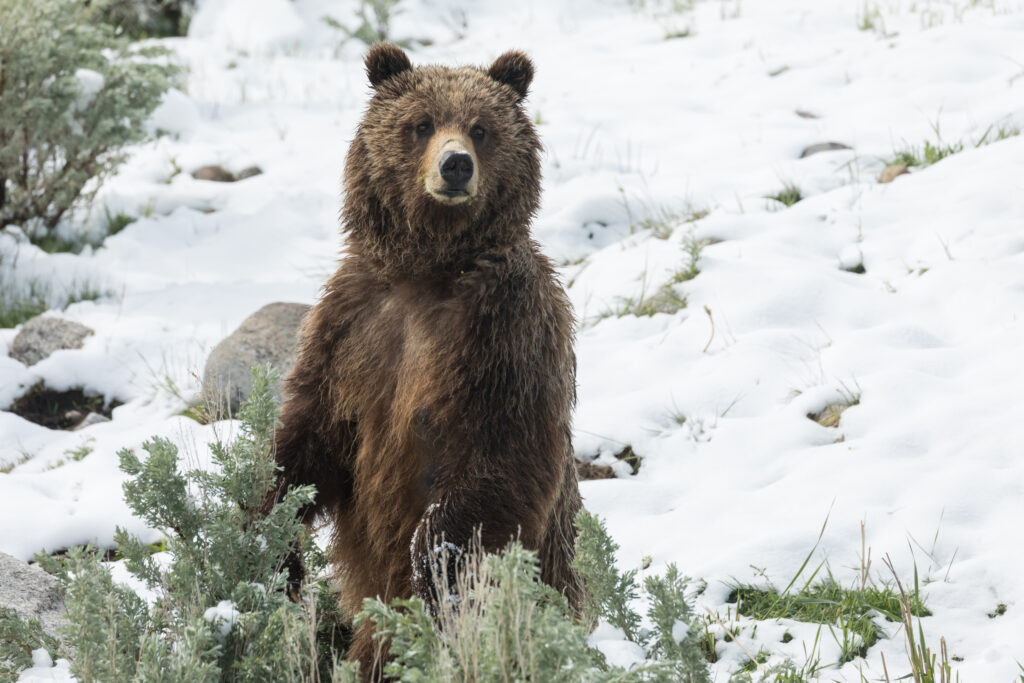
Grizzly bears live throughout the Northwest United States.
©Kelp Grizzly Photography/Shutterstock.com
Grizzly bears are located in North America in parts of western Canada, as well as the states of Alaska, Idaho, Montana, Washington, and Wyoming. Their habitat includes mountain forests, wetlands, grasslands, and arctic tundra.
Caribou are primarily located in Canada, but there are very small populations in the states of Alaska, Idaho, and Washington. Their preferred habitat is boreal forests, mountainous areas, and arctic tundra. Caribou are prey for grizzly bears, so the areas that overlap are where these two wild animals are likely to encounter each other.
Thank you for reading! Have some feedback for us? Contact the AZ Animals editorial team.



